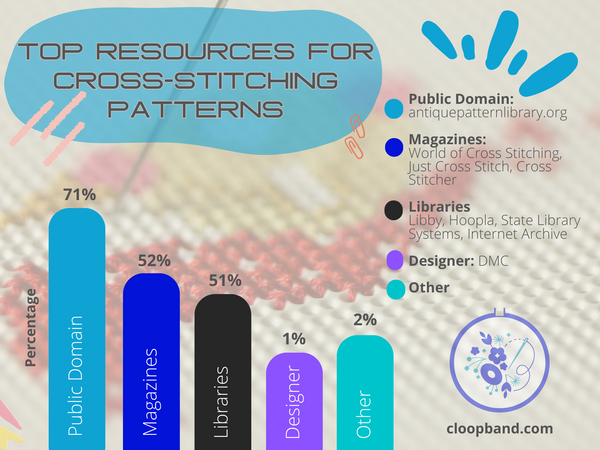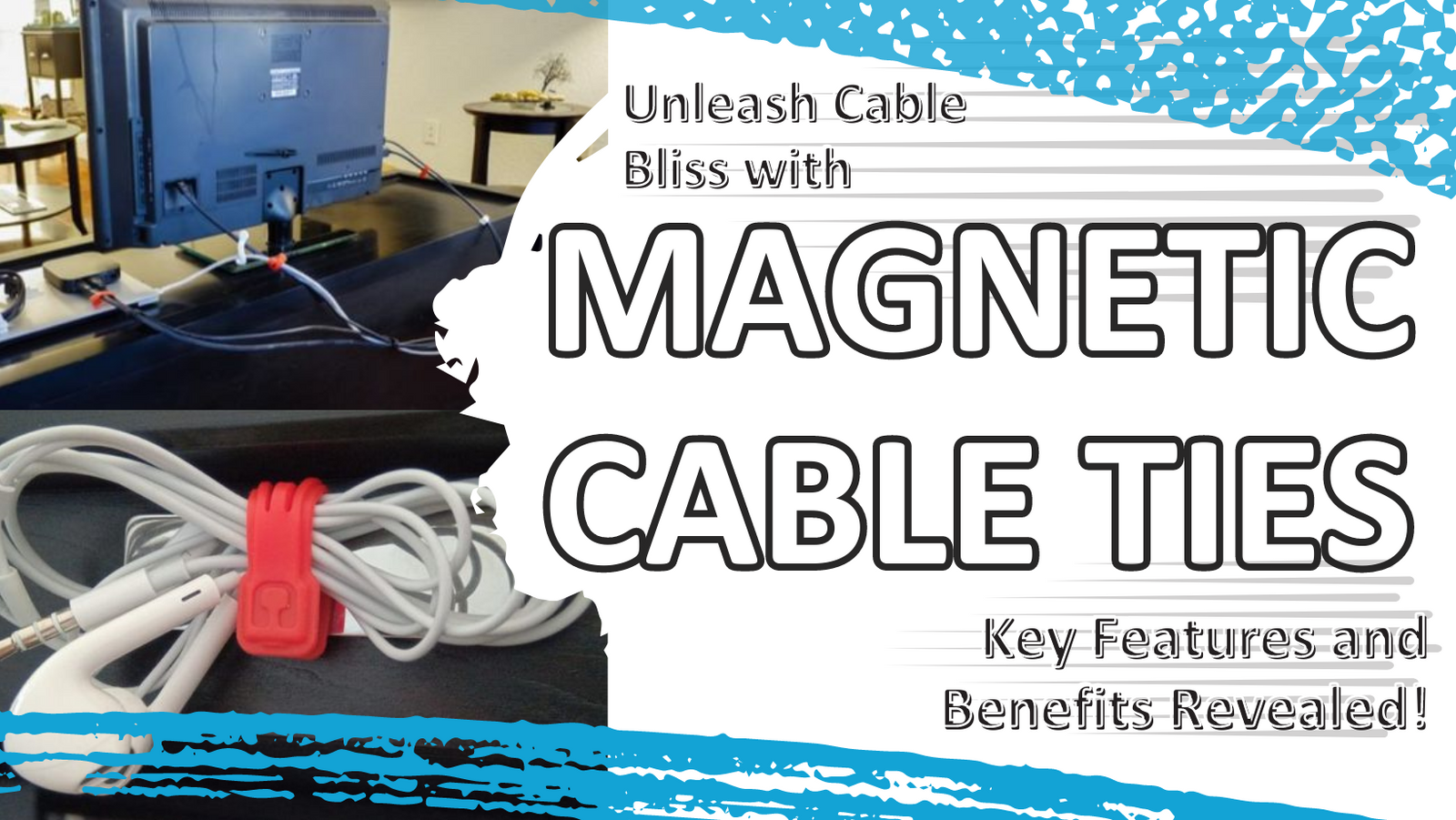- Home
- Products
- Media Gallery
- How it Works
- Blog
- About us
- Sign in
-
United States (USD $)
- Home
- Products
- Media Gallery
- How it Works
- Blog
-
About us
Learn How to Cross-Stitch with Our Comprehensive Guide
May 10, 2023
Are you looking🔍 for a new hobby that's both fun and relaxing? If so, cross-stitching might be just what you need! Cross-stitching is a form of embroidery that involves sewing X-shaped stitches to create intricate designs on fabric. It's a great way to unwind after a long day and express your creativity.
Cross-stitching offers a variety of benefits that make it a great hobby for people of all ages. First and foremost, cross-stitching is a relaxing activity that can help reduce stress and anxiety. The repetitive nature of stitching can be meditative and calming, helping to promote a sense of well-being.
Key Takeaways
- Cross-stitching is a relaxing and creative hobby that reduces stress and anxiety, offers a sense of accomplishment and satisfaction, and provides a creative outlet.
- Different styles of cross-stitching, including traditional, blackwork, Hardanger, Assisi, and counted thread, each possess distinct characteristics and historical origins.
- To begin your cross-stitching journey, gather the necessary supplies (fabric, thread, needle, hoop, pattern), cut and prepare your fabric, thread your needle, locate the center of your design, and then follow the provided stitching techniques and tips for a successful experience.
Cross-stitching can also provide a sense of accomplishment and satisfaction as you see your design come to life. It's a great way to express your creativity and make something beautiful that you can be proud of.
In this article, we'll cover everything you need to know to get started with cross-stitching, including the materials you'll need, the basic techniques, and tips for success. We'll also answer some common questions about cross-stitching and provide some free patterns to get you started.
So grab your needle and thread, and let's dive into the world of cross-stitching!
History of Cross-Stitching

Cross-stitching can be traced back to the Middle Ages, where it was primarily used to decorate religious vestments and household items. It was a popular form of embroidery in Europe and spread to other parts of the world as explorers and traders traveled.
Cross-stitching continued to be popular through the Renaissance and the Victorian era, where it was used to create intricate designs on clothing and accessories.
Different Styles of Cross-Stitching
Over time, different styles of cross-stitching have emerged, each with their own unique characteristics. Here are a few of the most popular styles:
-
Traditional Cross-Stitching: This style uses a simple X-shaped stitch and is typically worked on an even-weave fabric, such as Aida cloth. The designs are often geometric or floral patterns.
-
Blackwork: Blackwork is a style of cross-stitching that uses black thread on a white background to create intricate designs. It was popular in the Tudor era and was used to decorate clothing and household items.
-
Hardanger: Hardanger is a style of cross-stitching that originated in Norway. It involves creating a grid pattern on the fabric and then cutting away some of the threads to create a lacy effect.
-
Assisi: Assisi is a style of cross-stitching that uses colored thread on a white background to create designs that mimic the look of stained glass windows. It originated in Italy and was popular in the 16th century.
-
Counted Thread: Counted thread is a style of cross-stitching that involves counting the threads of the fabric to create intricate designs. It is often used to create samplers and other decorative items.
Getting Started with Cross-Stitching 👩🎨🧑🎨

Cross-stitching is a fun and rewarding hobby that has been around for centuries. It involves stitching small X-shaped stitches onto fabric to create beautiful designs. If you're interested in trying cross-stitching, here are some steps to help you get started:
🧵 Gather Your Supplies:
- Fabric: Choose a fabric that is specifically made for cross-stitching. Aida fabric is a popular choice for beginners.
- Thread: Cross-stitching thread is different from regular thread. It's made of six strands that can be separated and used individually.
- Needle: Use a needle that is the appropriate size for your fabric and thread.
- Cross-Stitching Hoop: A hoop will help keep your fabric taut while you stitch.
- Cross-Stitching Pattern: You can find free patterns online or purchase them at craft stores.
📏 Cut Your Fabric:
Cut your fabric to the desired size. Remember to leave extra room around the design to allow for framing.
🧶 Thread Your Needle:
Separate the thread into the desired number of strands and thread it through the needle.
🔍 Find the Center of Your Design:
This is an important step to ensure your design is centered on your fabric.
🔨 Start Stitching:
Begin stitching from the center of your design and work outward. Use the appropriate stitch for your pattern (full, half, or quarter).
🔄 Change Colors:
When changing colors, make sure to finish your current stitch before switching to a new color.
🌟 Tips for Beginners:
- Start with a simple design and work your way up to more complex patterns.
- Use Qsnap frames or Sew Tites Magnetics quilting to hold your fabric securely in place.
- Join a local stitching group, such as the Colorado Stitchers, to get support and learn new techniques.
- English paper piecing is a great way to practice stitching before starting a larger project.
With these basic steps and tips, you'll be well on your way to creating beautiful cross-stitch designs.
Cross-Stitching Techniques

Now that you have the basics of cross-stitching down, it's time to explore some techniques to take your stitching to the next level. Here are some techniques you can try:
Half Cross-Stitch: This is a quicker way of stitching and is great for adding texture to your work.
🧵🪡 Try using a single strand of floss for a more delicate look.
Backstitching: This technique is used to outline your design or add detail.
🔍🖋️ Try using a darker color than your main color to create contrast.
French Knots: This technique is used to add dimension to your work.
🌟💫 Try using metallic or variegated floss for a unique look.
Blending Colors: This technique is used to create a gradient effect.
🌈🎨 Try blending two colors by stitching one row of each color together.
Cross-Stitching on Different Fabrics: Experiment with stitching on different fabrics, such as Aida cloth, linen, or even t-shirts.
👚👖 Try using waste canvas to stitch on non-traditional fabrics.
Using Qsnap Frames: These frames have a unique design that allows you to easily adjust the tension of your fabric.
🔧🪚 Try using magnetic ties, such as Sew Tites Magnetics quilting, to hold your fabric in place.
With these techniques, you can create a unique and personalized cross-stitch project. Don't be afraid to experiment and try new things.
Tips for Successful Cross-Stitching 👍💡
Cross-stitching🧵 is a fun and relaxing hobby, but it can also be frustrating at times. Here are some tips to help you have a successful cross-stitching experience:
Start with a simple pattern 🐥🌺
- Choose a pattern with fewer colors and simple shapes
- Avoid intricate designs until you have more experience
- Remember, practice makes perfect!
Use the right materials 🧵🧶
- Choose high-quality threads and fabric to ensure a good result
- Use the appropriate needle size for your fabric
- Keep your materials organized to avoid confusion and mistakes
- Cross-stitching can be a repetitive activity, so take frequent breaks to avoid eye strain and hand fatigue
- Stretch your muscles and rest your eyes to prevent headaches and other discomforts
- Check your work after each row or section to avoid mistakes
- Use a magnifying glass or lightbox to see small details more clearly
- Undo mistakes immediately to avoid them becoming permanent
- Use acid-free materials to protect your work from yellowing and other damage
- Choose a frame that complements your work and protects it from dust and dirt
- Hang your finished work away from direct sunlight to prevent fading
Following these tips can help you have a successful and enjoyable cross-stitching experience. Don't forget to have fun and be patient with yourself as you learn and grow in this hobby!
Popular Resources for Cross-stitching Patterns Recommended by Passionate Stitchers

Free Cross-Stitching Patterns 🎁🆓
Cross-stitching🧵 is a versatile and creative craft that offers limitless possibilities for making unique designs🎨. You can stitch anything from a favorite quote to a portrait of your pet with the help of the abundance of free patterns available online. Below are some excellent resources that can assist you in getting started:
Websites🌐 for Free Patterns
There are many websites dedicated to providing free cross-stitch patterns for stitchers of all levels. Some of the most popular options include:
- DMC: The popular thread brand offers a wide selection of free patterns, including seasonal designs, animals, and more.
- Everything Cross-stitch: This website offers a variety of free patterns, ranging from simple to complex, along with tips and tricks for stitching.
- FreePatterns.com: This website has a large collection of cross-stitch patterns, including holiday themes, nature scenes, and more.
Social Media 📱 Accounts to Follow
Social media platforms are a great place to find free cross-stitch patterns, as many designers an d enthusiasts share their work for others to enjoy. Here are some accounts to check out:
- @dmc_embroidery on Instagram: This account shares free patterns and stitching inspiration using DMC threads.
- Cross-Stitching on Pinterest: Pinterest is a treasure trove of free patterns, and the Cross-Stitching account curates a collection of some of the best ones.
Tips for Using Free Patterns 📝
While using free patterns is a great way to save money and find inspiration, there are some things to keep in mind to make the most of your stitching experience. Here are some tips:
- Check the skill level: Make sure to check the skill level listed for each pattern to ensure that it is appropriate for your experience level.
- Read the instructions carefully: Be sure to read the instructions thoroughly before starting, as some patterns may have unique or complex elements.
- Customize the pattern: Don't be afraid to modify the pattern to make it your own. Add or remove elements, change colors, and make adjustments as desired.
With these resources and tips💡, you'll be able to find and use a wide variety of free cross-stitch patterns to create beautiful and unique pieces.
Wrapping Up 🎉🧵
You've made it🧵 to the end of our guide on cross-stitching! We hope this article has provided you with valuable information to help you get started with this relaxing and rewarding hobby.
Remember, cross-stitching is all about enjoying the process and creating something beautiful with your own hands. With the right tools, techniques, and mindset, anyone can become a skilled cross-stitcher.
Don't be afraid to experiment with different patterns, colors, and styles to make your projects truly unique. And if you ever get stuck, just refer back to this guide for helpful tips and tricks.
Happy stitching! 🧵💕
Common Questions About Cross-Stitching ❓🤔
Cross-stitching is a popular and enjoyable hobby that has been around for centuries. However, even experienced stitchers may have questions about certain aspects of the craft. Here are some of the most commonly asked questions about cross-stitching:
Do you use 2 or 3 strands for cross-stitch?
The number of strands used for cross-stitch can vary depending on the fabric count and the desired effect. Generally, cross-stitch is worked using two strands of stranded cotton when working on 14-count and 16-count Aida
Is cross-stitch easy for beginners?
Yes, cross-stitching is a great craft for beginners, as it only involves a few basic stitches.
Is cross-stitch easier than embroidery?
Cross-stitching and embroidery are both enjoyable crafts, but cross-stitching is generally considered to be easier than embroidery.
How long does it take to cross-stitch?
The time it takes to complete a cross-stitch project varies depending on the size and complexity of the design.
Does it matter which way you start cross-stitch?
When beginning a cross-stitch project, it is recommended to start stitching from the center of the design for the easiest experience, though the stitcher can opt for a more comfortable section. It is important to begin stitching from the center of the fabric to prevent material shortage due to miscounting near the edge. The starting direction of the cross-stitch doesn't matter, but it's essential to ensure that all top stitches face the same direction to achieve a tidy outcome.
What is the most efficient way to cross-stitch?
The most efficient way to cross-stitch is to work in rows, stitching each symbol as you go.
How do I start my first cross-stitch?
To start your first cross-stitch project, you'll need a pattern, fabric, thread, and a needle. Follow the pattern to stitch your design onto the fabric.
Do you always start cross-stitch in the middle?
To ensure that a cross-stitch design is centered, it's useful to locate the center of the fabric when starting the project. It's generally recommended to begin stitching in the middle of the fabric to allow enough room for stitches and prevent material shortage in case of miscounting near the edge. Nevertheless, it's not mandatory to always begin in the middle, and the stitcher can choose to start in any area that they find comfortable.
What is the hardest stitch to make?
The hardest stitch in cross-stitching is typically the French knot.
Is cross-stitch outdated?
No, cross-stitching is still a popular hobby enjoyed by many people all over the world.
Can you make a living doing cross-stitch?
While it is possible to make money selling cross-stitch items, it is unlikely to be a full-time income.
What is frogging in cross-stitch?
Frogging is the term used when you have to undo stitches because of a mistake. It is called frogging because you "rip-it, rip-it" like a frog's croak.
Do you wash fabric before cross-stitching?
It is recommended to wash your fabric before stitching to remove any sizing or residue that could affect the finished project.
Is cross-stitch a good hobby?
Yes, cross-stitching is a great hobby for relaxation and creating beautiful pieces of art.
Do you do light or dark colors first in cross-stitch?
There isn't a definitive guideline when it comes to the order of stitching light or dark colors in cross-stitch. However, certain stitchers prefer to start with darker hues and progress towards lighter ones, particularly for more extensive designs, to reduce the visibility of dirt accumulated along the way. Conversely, some choose to begin with light colors, particularly when working on a light background, to prevent darker fibers from showing through. It is advisable to start and end threads in an area with the same or darker shade.
When cross-stitching, do you do all of one color first?
It is common to work in sections and complete all stitches of one color before moving on to the next color.
Do you cross-stitch or backstitch first?
It is recommended to complete all cross-stitching before moving on to backstitching to create a crisp and clean finished product.
Leave a comment
Comments will be approved before showing up.
Also in Cloop Blog

Say Goodbye to Messy Wires: A Comprehensive Guide to Cable Clips
August 20, 2023
This article provides a comprehensive guide on cable clips, including types of cable clips, how to attach cables to a wall without nails, choosing the right size cable clip, proper cable clip installation, and references for further reading. It also includes practical tips, anecdotal evidence, and unique content to engage readers. The article aims to help readers organize their cables and improve the aesthetics and functionality of their spaces.

Supercharge Your Daily Commute: Maximize Productivity with These Game-Changing Tips
August 20, 2023
Magnetic cable ties are a convenient and efficient solution for organizing and managing cables during your daily commute. They simplify cable management, save time and effort, and offer reusability. These ties are versatile and can be used for various applications beyond cable management. They are durable, safe, and have an innovative design. In comparison to traditional cable ties, magnetic cable ties offer advantages such as reusability, adjustability, safety, versatility, durability, cost-effectiveness, and a sleek appearance. By incorporating magnetic cable ties into your daily routine, you can enhance productivity and optimize your commute experience.

Unleash Cable Bliss with Magnetic Cable Ties: Key Features and Benefits Revealed!
August 20, 2023
In this blog post, we delve into the world of magnetic cable ties and explore their remarkable features and benefits. These innovative tools offer a solution to the perennial problem of tangled cables, providing a convenient and secure way to keep your cords organized. From their strong magnets and quick lock/release mechanism to the cable passage design that ensures cables stay attached, magnetic cable ties are a game-changer. We also provide practical tips for cable bliss, such as storing cables without tangling and using zip ties effectively. Testimonials from satisfied users add a personal touch, and we offer ideas for creating your own cable oasis. Say goodbye to cable chaos and welcome a tidier and more organized life with magnetic cable ties.
Sign up to get the latest on sales, new releases and more…

